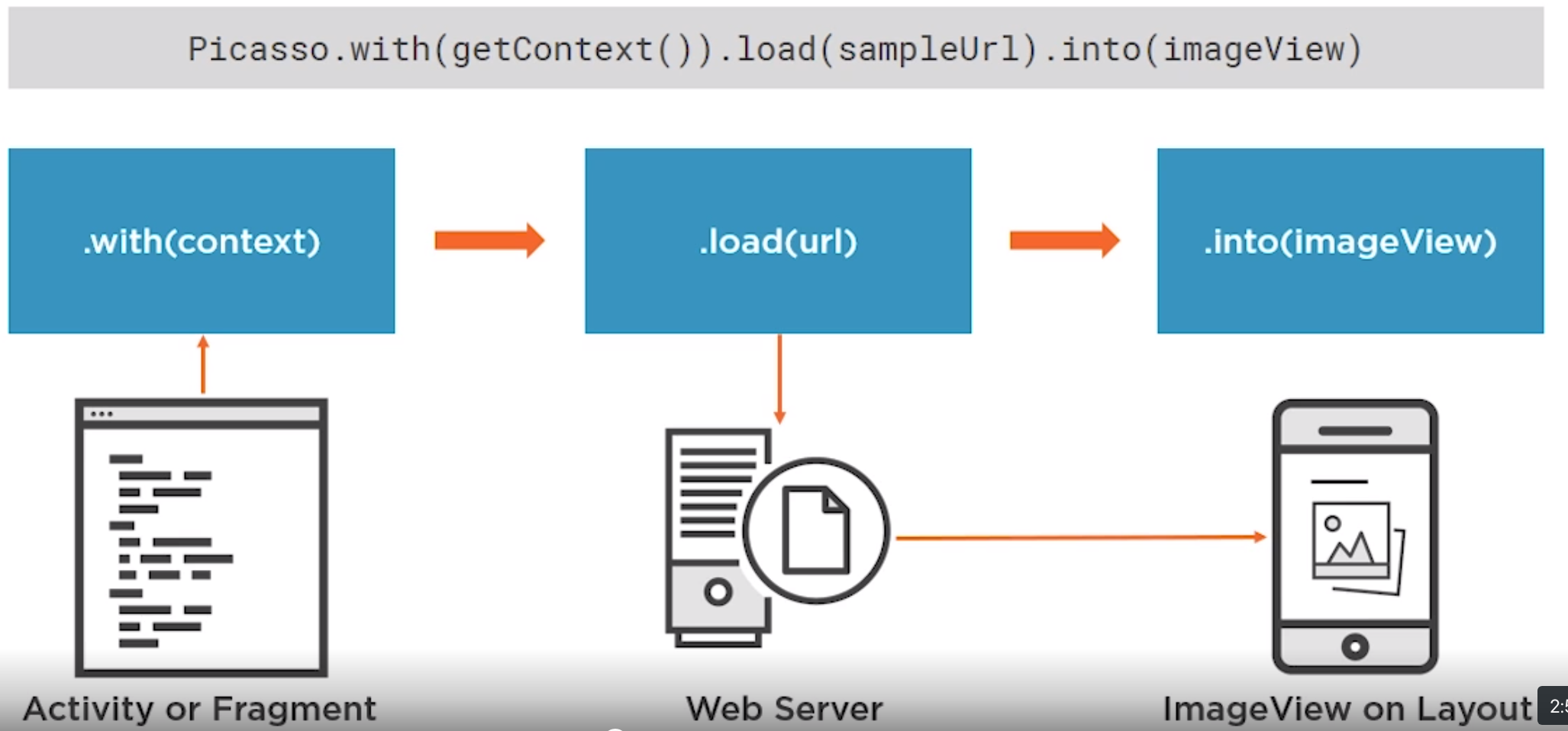Introduction
Picasso is a library for managing images on Android and is very simple to use
Picasso.with(getContext()).load(sampleURI).into(imageView)
 Picasso Provides
Picasso Provides
- Flexible Source Locations
- Caching
- Image Trnasformations
- Error Handling
- Logging
- Request Management
To add it to our projects we simply add it to the gradle. At the time this was
implementation 'com.squareup.picasso:picasso:2.71828'
Comparison
Other libraries are available such as
- Glide, good for memory management
- Fresco,
<thead>
</thead>
<tbody>
</tbody>
| Criterion |
 > > |
<img src="/wp-content/uploads/2020/07/Glide_logo.png" width="165px"> |
<img src="/wp-content/uploads/2020/07/Fresco_logo.png" width="165px"> |
| Size |
121 Kb/td>
| 440 Kb |
500 kb |
| Convenience of use |
high |
high |
middle |
| Web Download Speed |
high |
slightly lower due to lengthy caching processing |
high |
| Cache Download Speed |
average |
high |
high |
| Built-in Transformation Features |
basic set of operations |
basic set plus rounding |
wide range of transformation capabilities, but with limitations |
| Additional tools |
Absent. |
Loading a frame from video as a picture and GIF, using any type of model, a flexible API with the ability to connect any network stack. |
Saving images not in Java Heap, but in ashmem heap, the ability to crop images around any point, resize JPEG using native resources, support for Progressive JPEG images. |
